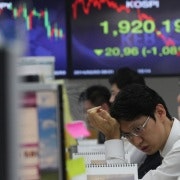Contrarians find emerging opportunities
Over the last three years, emerging markets have made the transition from “darlings” to “underdogs” in the collective mind of global investors.
The long-term attractions of the likes of the BRIC countries have quickly been written off and replaced by terms such as the “Fragile Five” (comprised of Brazil, India, Indonesia, South Africa and Turkey) and talk of a return to the crises of the 1990s.
The reality is that moderating growth (at both a macro and corporate level) in emerging markets has come at the same time developed markets have begun to generate growth of their own. Our sense is that this reversal has now gone too far, with bearish sentiment towards emerging markets now rife. Predictions that the emerging markets story is over are exaggerated, with little foundation in reality.
Subject to such low expectations, we believe there is now scope for positive surprises. Aggregate valuations are low in emerging markets at a time when valuations in other geographies have risen significantly. According to Morgan Stanley, emerging markets trade on a trailing price to earnings multiple of 11.2x and a trailing price to book multiple of 1.4x. The discount in emerging markets valuations relative to developed markets is back to levels last seen in 2004 and not seen even in the depths of the 2008/09 financial crisis, as per the chart below. Historically, this has represented an exceptional entry point for patient, long-term, contrarian investors.
The risks
In the short-term, we can’t help but remain cautious and are resisting complacency. Indeed, there are several critical issues that warrant such a stance.
Political risk has unquestionably risen over the last year, with social unrest seen in Brazil, Turkey and Thailand. Elections will take place in 2014 in many markets, including all of the “Fragile Five”. Long term, the fact that the general populations feel more able to voice their frustrations is a positive. As each election occurs or unrest dissipates, either due to change or protester fatigue, we would expect to see appetite to invest in the relevant countries rise.
We remain greatly concerned by the degree of market and currency distortion and manipulation by developed country policy makers, with Japan being the latest culprit via “Abenomics”, implementing its own Quantitative Easing and manipulating the yen. Indeed, emerging markets economies and currencies have been harmed and inhibited by such practices and won’t be free to move to their next stage of growth and development until interest rates and monetary policies in developed countries normalise, which is likely to take another one to two years. We have already seen positive signs on this front from the Fed as they moved from guidance to action.
Outlook: the glass is half full
Emerging markets are unquestionably going through a transition, from a period of high expectations to more measured ones, but with attractive equity valuations, weaker currencies and widespread negative sentiment, as well as longer term positive demographic trends and better educated emerging middle classes, we believe that better is to come.
Dr Slim Feriani is CIO of Advance Emerging Capital, a London-based investment management company dedicated to global emerging and frontier growth markets equities.
















